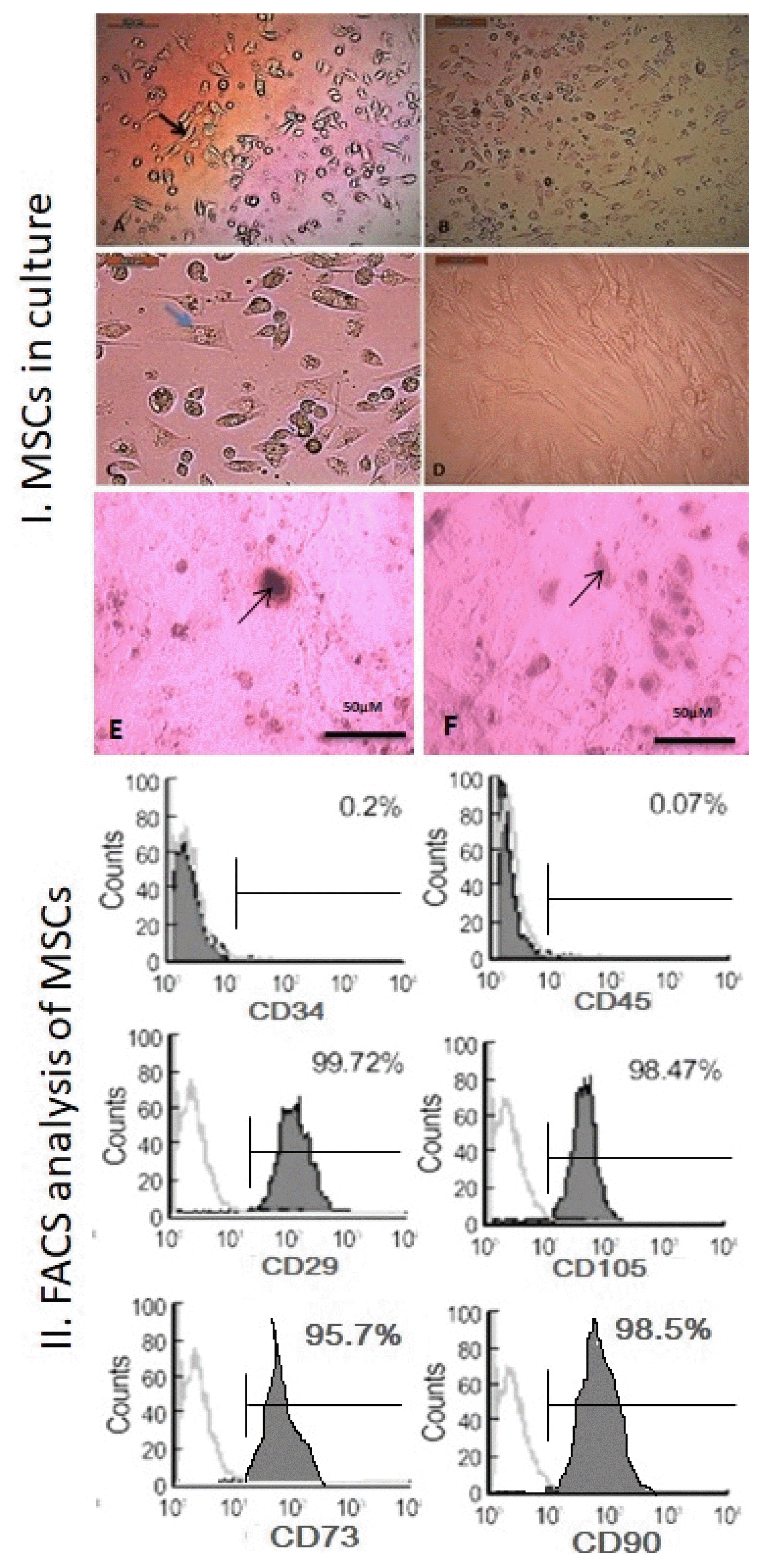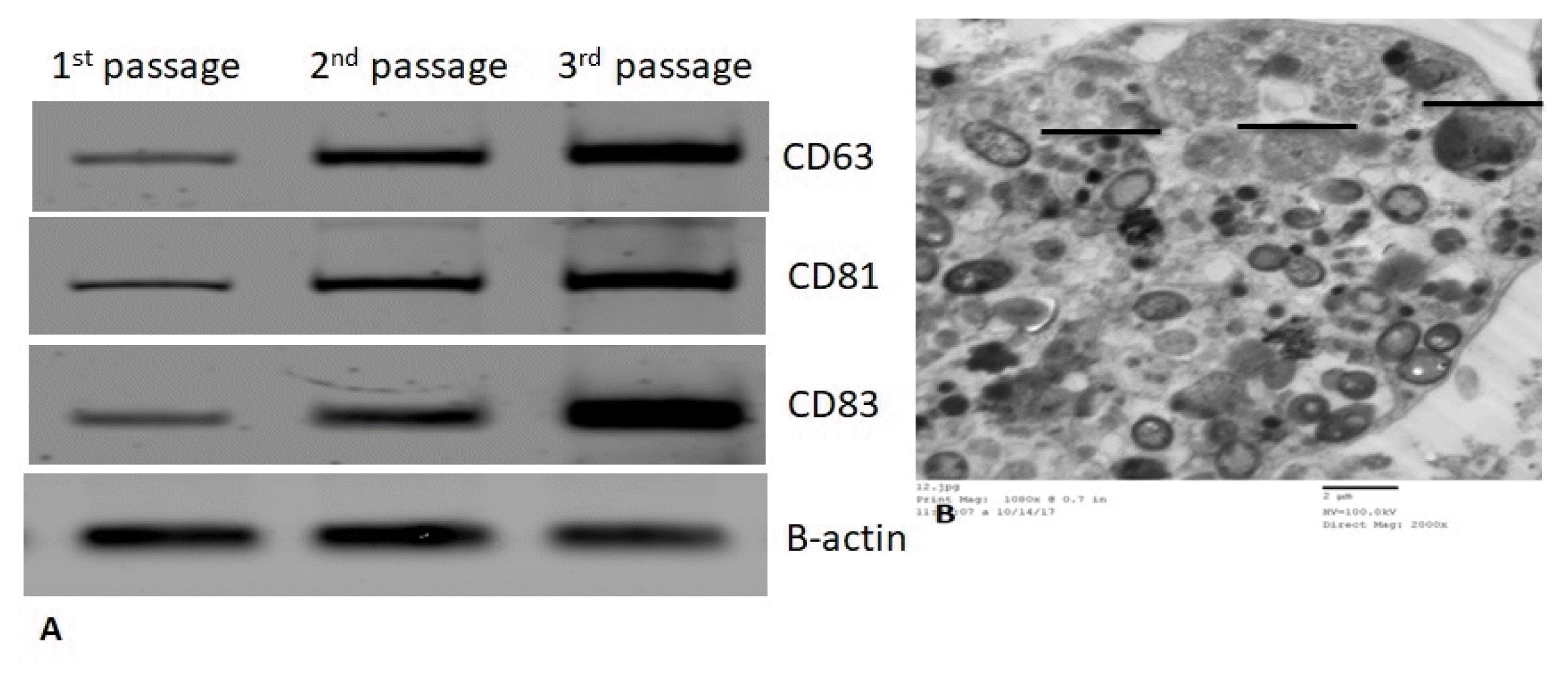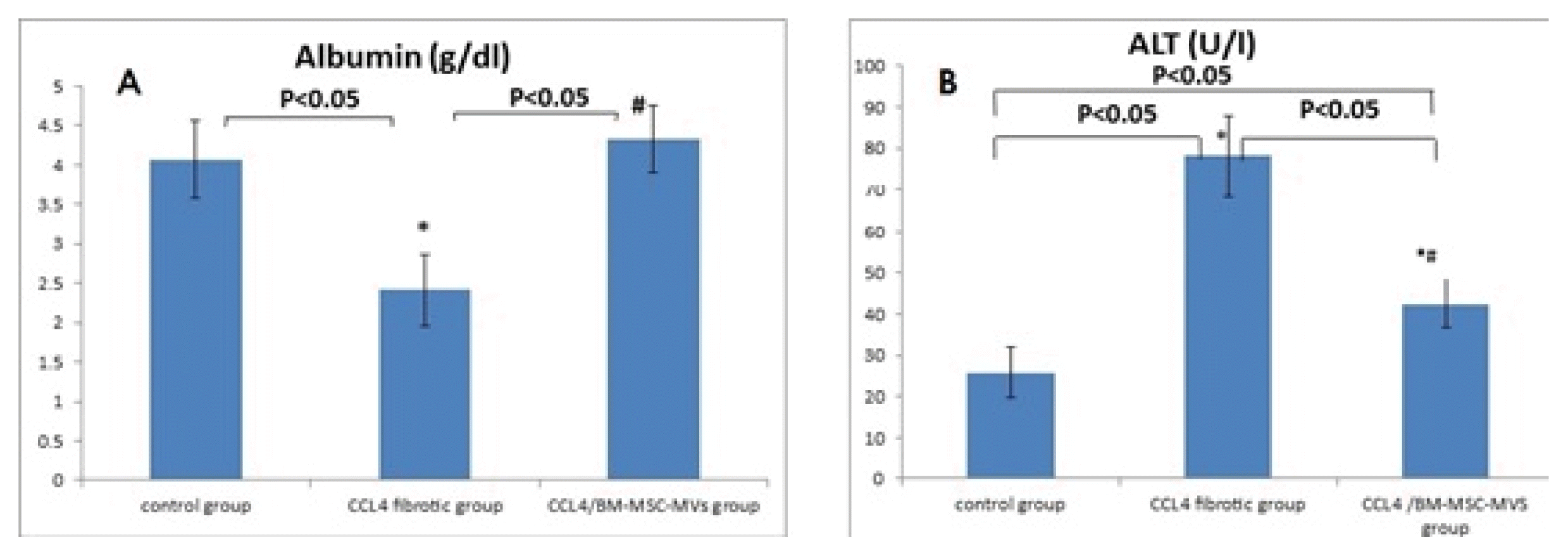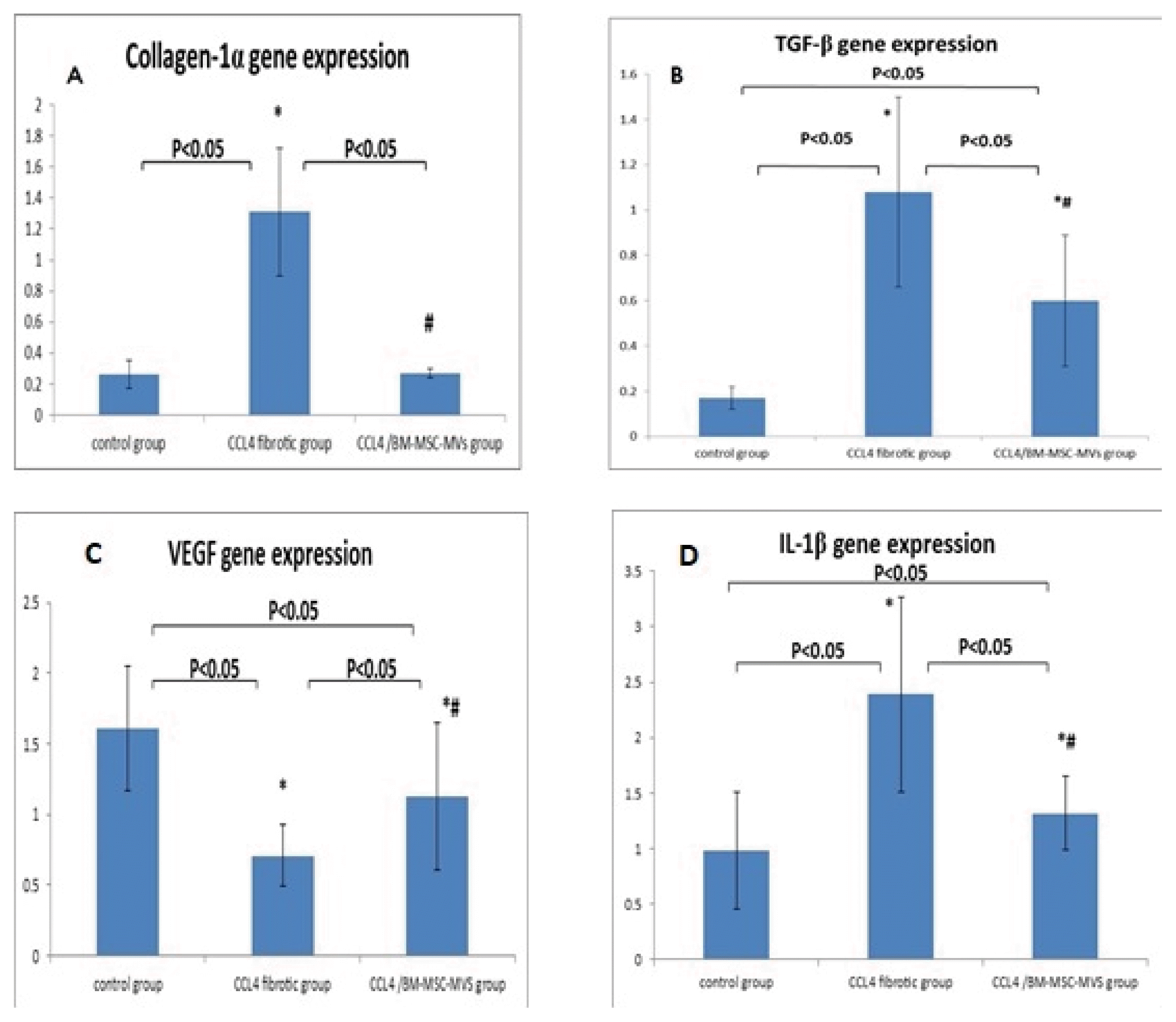1. Koyama Y, Xu J, Liu X, Brenner DA. New developments on the treatment of liver fibrosis. Dig Dis. 2016; 34:589–956. DOI:
10.1159/000445269. PMID:
27332862. PMCID:
PMC4961096.

2. Eom YW, Kim G, Baik SK. Mesenchymal stem cell therapy for cirrhosis: present and future perspectives. World J Gastroenterol. 2015; 21:10253–10261. DOI:
10.3748/wjg.v21.i36.10253. PMID:
26420953. PMCID:
PMC4579873.

3. Guo Y, Chen B, Chen LJ, Zhang CF, Xiang C. Current status and future prospects of mesenchymal stem cell therapy for liver fibrosis. J Zhejiang Univ Sci B. 2016; 17:831–841. DOI:
10.1631/jzus.B1600101. PMID:
27819130. PMCID:
PMC5120225.

4. Rengasamy M, Singh G, Fakharuzi NA, Siddikuzzaman , Balasubramanian S, Swamynathan P, Thej C, Sasidharan G, Gupta PK, Das AK, Rahman AZA, Fakiruddin KS, Nian LM, Zakaria Z, Majumdar AS. Transplantation of human bone marrow mesenchymal stromal cells reduces liver fibrosis more effectively than Wharton’s jelly mesenchymal stromal cells. Stem Cell Res Ther. 2017; 8:143. DOI:
10.1186/s13287-017-0595-1. PMID:
28610623. PMCID:
PMC5470281.
5. Kharaziha P, Hellström PM, Noorinayer B, Farzaneh F, Aghajani K, Jafari F, Telkabadi M, Atashi A, Honardoost M, Zali MR, Soleimani M. Improvement of liver function in liver cirrhosis patients after autologous mesenchymal stem cell injection: a phase I–II clinical trial. Eur J Gastroenterol Hepatol. 2009; 21:1199–1205. DOI:
10.1097/MEG.0b013e32832a1f6c. PMID:
19455046.

6. Jang YO, Kim MY, Cho MY, Baik SK, Cho YZ, Kwon SO. Effect of bone marrow-derived mesenchymal stem cells on hepatic fibrosis in a thioacetamide-induced cirrhotic rat model. BMC Gastroenterol. 2014; 14:198. DOI:
10.1186/s12876-014-0198-6. PMID:
25425284. PMCID:
PMC4251876.

7. Milosavljevic N, Gazdic M, Simovic Markovic B, Arsenijevic A, Nurkovic J, Dolicanin Z, Jovicic N, Jeftic I, Djonov V, Arsenijevic N, Lukic ML, Volarevic V. Mesenchymal stem cells attenuate liver fibrosis by suppressing Th17 cells - an experimental study. Transpl Int. 2018; 31:102–115. DOI:
10.1111/tri.13023. PMID:
28805262.

8. Berardis S, Dwisthi Sattwika P, Najimi M, Sokal EM. Use of mesenchymal stem cells to treat liver fibrosis: current situation and future prospects. World J Gastroenterol. 2015; 21:742–758. DOI:
10.3748/wjg.v21.i3.742. PMID:
25624709. PMCID:
PMC4299328.

9. Jang YO, Jun BG, Baik SK, Kim MY, Kwon SO. Inhibition of hepatic stellate cells by bone marrow-derived mesenchymal stem cells in hepatic fibrosis. Clin Mol Hepatol. 2015; 21:141–149. DOI:
10.3350/cmh.2015.21.2.141. PMID:
26157751. PMCID:
PMC4493357.

10. Amin MA, Sabry D, Rashed LA, Aref WM, el-Ghobary MA, Farhan MS, Fouad HA, Youssef YA. Short-term evaluation of autologous transplantation of bone marrow-derived mesenchymal stem cells in patients with cirrhosis: Egyptian study. Clin Transplant. 2013; 27:607–612. DOI:
10.1111/ctr.12179. PMID:
23923970.

11. Wang N, Li Q, Zhang L, Lin H, Hu J, Li D, Shi S, Cui S, Zhou J, Ji J, Wan J, Cai G, Chen X. Mesenchymal stem cells attenuate peritoneal injury through secretion of TSG-6. PLoS One. 2012; 7:e43768. DOI:
10.1371/journal.pone.0043768. PMID:
22912904. PMCID:
PMC3422344.

12. Baglio SR, Pegtel DM, Baldini N. Mesenchymal stem cell secreted vesicles provide novel opportunities in (stem) cell-free therapy. Front Physiol. 2012; 3:359. DOI:
10.3389/fphys.2012.00359. PMID:
22973239. PMCID:
PMC3434369.

13. Bruno S, Grange C, Deregibus MC, Calogero RA, Saviozzi S, Collino F, Morando L, Busca A, Falda M, Bussolati B, Tetta C, Camussi G. Mesenchymal stem cell-derived microvesicles protect against acute tubular injury. J Am Soc Nephrol. 2009; 20:1053–1067. DOI:
10.1681/ASN.2008070798. PMID:
19389847. PMCID:
PMC2676194.

14. Biancone L, Bruno S, Deregibus MC, Tetta C, Camussi G. Therapeutic potential of mesenchymal stem cell-derived microvesicles. Nephrol Dial Transplant. 2012; 27:3037–3042. DOI:
10.1093/ndt/gfs168. PMID:
22851627.

15. Hulsmans M, Holvoet P. MicroRNA-containing microvesicles regulating inflammation in association with atherosclerotic disease. Cardiovasc Res. 2013; 100:7–18. DOI:
10.1093/cvr/cvt161. PMID:
23774505.

17. Kilpinen L, Impola U, Sankkila L, Ritamo I, Aatonen M, Kilpinen S, Tuimala J, Valmu L, Levijoki J, Finckenberg P, Siljander P, Kankuri E, Mervaala E, Laitinen S. Extracellular membrane vesicles from umbilical cord blood-derived MSC protect against ischemic acute kidney injury, a feature that is lost after inflammatory conditioning. J Extracell Vesicles. 2013; DOI:
10.3402/jev.v2i0.21927. PMID:
24349659. PMCID:
PMC3860334.

18. Yin H, Jiang H. Application prospect of stem cell-derived microvesicles in regeneration of injured tissues. Sheng Wu Yi Xue Gong Cheng Xue Za Zhi. 2015; 32:688–692. Chinese. PMID:
26486001.
19. Abdel Aziz MT, Atta HM, Mahfouz S, Fouad HH, Roshdy NK, Ahmed HH, Rashed LA, Sabry D, Hassouna AA, Hasan NM. Therapeutic potential of bone marrow-derived mesenchymal stem cells on experimental liver fibrosis. Clin Biochem. 2007; 40:893–899. DOI:
10.1016/j.clinbiochem.2007.04.017. PMID:
17543295.

20. Gatti S, Bruno S, Deregibus MC, Sordi A, Cantaluppi V, Tetta C, Camussi G. Microvesicles derived from human adult mesenchymal stem cells protect against ischaemia-reperfusion-induced acute and chronic kidney injury. Nephrol Dial Transplant. 2011; 26:1474–1483. DOI:
10.1093/ndt/gfr015. PMID:
21324974.

21. Zhao DC, Lei JX, Chen R, Yu WH, Zhang XM, Li SN, Xiang P. Bone marrow-derived mesenchymal stem cells protect against experimental liver fibrosis in rats. World J Gastroenterol. 2005; 11:3431–3440. DOI:
10.3748/wjg.v11.i22.3431. PMID:
15948250. PMCID:
PMC4315999.

22. Qu Y, Zhang Q, Cai X, Li F, Ma Z, Xu M, Lu L. Exosomes derived from miR-181-5p-modified adipose-derived mesenchymal stem cells prevent liver fibrosis via autophagy activation. J Cell Mol Med. 2017; 21:2491–2502. DOI:
10.1111/jcmm.13170. PMID:
28382720. PMCID:
PMC5618698.

23. Chan YH. Biostatistics 102: quantitative data--parametric & non-parametric tests. Singapore Med J. 2003; 44:391–396. PMID:
14700417.
24. Chan YH. Biostatistics 104: correlational analysis. Singapore Med J. 2003; 44:614–619. PMID:
14770254.
25. Truong NH, Nguyen NH, Le TV, Vu NB, Huynh N, Nguyen TV, Le HM, Phan NK, Pham PV. Comparison of the treatment efficiency of bone marrow-derived mesenchymal stem cell transplantation via tail and portal veins in CCl
4-induced mouse liver fibrosis. Stem Cells Int. 2016; 2016:5720413. DOI:
10.1155/2016/5720413. PMID:
26839564. PMCID:
PMC4709782.
28. Rad F, Pourfathollah AA, Yari F, Mohammadi S, Kheirandish M. Microvesicles preparation from mesenchymal stem cells. Med J Islam Repub Iran. 2016; 30:398. PMID:
27579288. PMCID:
PMC5004526.
29. Monsel A, Zhu YG, Gennai S, Hao Q, Hu S, Rouby JJ, Rosenzwajg M, Matthay MA, Lee JW. Therapeutic effects of human mesenchymal stem cell-derived microvesicles in severe pneumonia in mice. Am J Respir Crit Care Med. 2015; 192:324–336. DOI:
10.1164/rccm.201410-1765OC. PMID:
26067592. PMCID:
PMC4584251.

30. Zou X, Zhang G, Cheng Z, Yin D, Du T, Ju G, Miao S, Liu G, Lu M, Zhu Y. Microvesicles derived from human Wharton’s Jelly mesenchymal stromal cells ameliorate renal ischemia-reperfusion injury in rats by suppressing CX3CL1. Stem Cell Res Ther. 2014; 5:40. DOI:
10.1186/scrt428. PMID:
24646750. PMCID:
PMC4055103.

31. Salem M, Helal O, Metwaly H, El Hady A, Ahmed S. Histological and immunohistochemical study of the role of stem cells, conditioned medium and microvesicles in treatment of experimentally induced acute kidney injury in rats. J Med Histol. 2017; 1:69–83. DOI:
10.21608/jmh.2017.1108.1018.

32. Sharma AK, Lu G, Salmon MD, Gehrau RC, Mas VR, Weiss ML, Ailawadi G, Upchurch GR. Human mesenchymal stem cell-derived microvesicles mitigate aortic smooth muscle cell activation via miR-147 and attenuate aortic aneurysm formation. Circulation. 2015; 132:A11550.
33. Dong S, Chen QL, Song YN, Sun Y, Wei B, Li XY, Hu YY, Liu P, Su SB. Mechanisms of CCl
4-induced liver fibrosis with combined transcriptomic and proteomic analysis. J Toxicol Sci. 2016; 41:561–572. DOI:
10.2131/jts.41.561. PMID:
27452039.

34. Shrestha N, Chand L, Han MK, Lee SO, Kim CY, Jeong YJ. Glutamine inhibits CCl
4 induced liver fibrosis in mice and TGF-β1 mediated epithelial-mesenchymal transition in mouse hepatocytes. Food Chem Toxicol. 2016; 93:129–137. DOI:
10.1016/j.fct.2016.04.024. PMID:
27137983.

35. Lei Q, Liu T, Gao F, Xie H, Sun L, Zhao A, Ren W, Guo H, Zhang L, Wang H, Chen Z, Guo AY, Li Q. Microvesicles as potential biomarkers for the identification of senescence in human mesenchymal stem cells. Theranostics. 2017; 7:2673–2689. DOI:
10.7150/thno.18915. PMID:
28819455. PMCID:
PMC5558561.

36. Haga H, Yan IK, Takahashi K, Matsuda A, Patel T. Extracellular Vesicles from bone marrow-derived mesenchymal stem cells improve survival from lethal hepatic failure in mice. Stem Cells Transl Med. 2017; 6:1262–1272. DOI:
10.1002/sctm.16-0226. PMID:
28213967. PMCID:
PMC5442843.

37. Senior JR. Alanine aminotransferase: a clinical and regulatory tool for detecting liver injury-past, present, and future. Clin Pharmacol Ther. 2012; 92:332–339. DOI:
10.1038/clpt.2012.108. PMID:
22871997.

39. Song YM, Lian CH, Wu CS, Ji AF, Xiang JJ, Wang XY. Effects of bone marrow-derived mesenchymal stem cells transplanted via the portal vein or tail vein on liver injury in rats with liver cirrhosis. Exp Ther Med. 2015; 9:1292–1298. DOI:
10.3892/etm.2015.2232. PMID:
25780424. PMCID:
PMC4353761.

40. Chen J, Li C, Chen L. The role of microvesicles derived from mesenchymal stem cells in lung diseases. Biomed Res Int. 2015; 2015:985814. DOI:
10.1155/2015/985814. PMID:
26064975. PMCID:
PMC4443645.

42. Adas G, Koc B, Adas M, Duruksu G, Subasi C, Kemik O, Kemik A, Sakiz D, Kalayci M, Purisa S, Unal S, Karaoz E. Effects of mesenchymal stem cells and VEGF on liver regeneration following major resection. Langenbecks Arch Surg. 2016; 401:725–740. DOI:
10.1007/s00423-016-1380-9. PMID:
27094936.

43. Lee SC, Jeong HJ, Lee SK, Kim SJ. Hypoxic conditioned medium from human adipose-derived stem cells promotes mouse liver regeneration through JAK/STAT3 signaling. Stem Cells Transl Med. 2016; 5:816–825. DOI:
10.5966/sctm.2015-0191. PMID:
27102647. PMCID:
PMC4878330.

44. Zou X, Gu D, Xing X, Cheng Z, Gong D, Zhang G, Zhu Y. Human mesenchymal stromal cell-derived extracellular vesicles alleviate renal ischemic reperfusion injury and enhance angiogenesis in rats. Am J Transl Res. 2016; 8:4289–4299. PMID:
27830012. PMCID:
PMC5095321.
45. Zhang HC, Liu XB, Huang S, Bi XY, Wang HX, Xie LX, Wang YQ, Cao XF, Lv J, Xiao FJ, Yang Y, Guo ZK. Microvesicles derived from human umbilical cord mesenchymal stem cells stimulated by hypoxia promote angiogenesis both in vitro and in vivo. Stem Cells Dev. 2012; 21:3289–3297. DOI:
10.1089/scd.2012.0095. PMID:
22839741. PMCID:
PMC3516422.





 PDF
PDF Citation
Citation Print
Print







 XML Download
XML Download